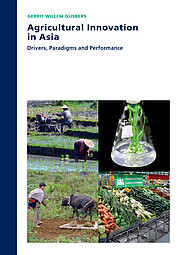Agricultural Innovation in Asia: Drivers, Paradigms and Performance Defended on Thursday, 15 January 2009
Agriculture in Asia has shown impressive advances over the last two decades. Yet, enormous challenges lie ahead. Rising food prices, climate change, the loss of agricultural land to erosion and urbanization, and a growing and more affluent population will require continuous increases in productivity and improvements in sustainability. To answer those challenges Asian agriculture will need to become much more knowledge intensive and innovative. This study analyzes the theory and practice of agricultural innovation, focusing on the nature of the innovation process, the forces that drive agricultural innovation, the core actors involved, and the key techno-institutional innovation paradigms that have emerged. On the basis of this theoretical framework the study presents an analysis of agricultural innovation in four Asian countries: Indonesia, Pakistan, Sri Lanka and Vietnam, analyzing innovation at the levels of the agricultural production system, the national innovation system, and discussing the roles of public and private actors and innovation networks. The study finds that four different techno-institutional paradigms can be distinguished, based on four revolutions in Asian agriculture: the green revolution, the sustainability revolution, the biotechnology revolution and the supermarket revolution. These paradigms are based on fundamentally different technologies, involve different actors and innovation networks and show different patterns of performance across Asia. To be effective, agricultural research and innovation policies need to reflect the specific opportunities and constraints of the four techno-institutional paradigms.








